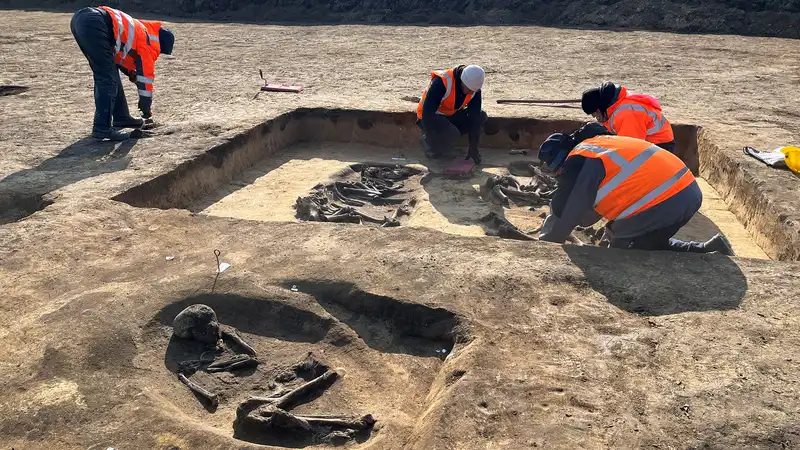Today, Intel's Magdeburg megafab in Germany is little more than a field with a few holes in it. But the holes are historically significant. Archaeologists from the Saxony-Anhalt State Department of Cultural Heritage Management and Archaeology have discovered several burial mounds, including a Neolithic chariot mound.
The burial sites found at the site are believed to be approximately 6,000 years old.
"There were two approximately 6,000-year-old mounds covering wooden grave chambers, each with several burials," Dr. Oliver Dietrich said of the discovery (via CBS News). This landscape obviously remained important to prehistoric peoples for a long time." About a thousand years later, the passage between the mounds was used as a pathway for processions where cattle were sacrificed and people were buried"
.
Archaeologists have been studying the site outside Magdeburg, Germany, since 2023. It is the site where Intel plans to build what it calls "Silicon Junction," the largest facility in Europe, which, when completed, will be a semiconductor plant that will pump out the world's most advanced chips. However, it will be some time before the first CPUs manufactured there are shipped for packaging, as archaeologists' trowels are cutting the ground ahead of Intel's construction equipment.
"The sprawling 300-hectare industrial park also includes part of a small hill known as the Eulenberg. Although not particularly high, it breaks up the relatively low-lying Verdean terrain, and its fertile loess and black soil was already an important factor in settlement in the early Neolithic period. The area now being studied turns out to be a very complex, long-used burial and ritual landscape.
The Saxony-Anhalt Heritage Management and Archaeology Department has not yet revealed what will happen to the affected burial sites, but it seems likely that they will be moved to a safe location in the coming months.
Archaeologists will remain at the site until April of this year. Intel will move in a few months later. A state-of-the-art factory of this kind requires deep foundations with a sturdy metal hull, which means digging deep into the ground. The latest generation of lithography machines are so large and heavy that they require serious machinery to build the shells to accommodate them. When I was at the construction site of Intel's Fab 38, or what will become Fab 38, in Israel, I saw the second largest crane in the world preparing to move the metal girders surrounding the facility. Apparently Intel was going to hire the largest crane in the world, but that crane was busy building a nuclear reactor in the UK.
You would be surprised how quickly a multi-billion dollar fab site can rise from nothing. Take a look at this comparison image taken from Google Earth of TSMC's new Fab 21 plant in Arizona. It has transformed from a dusty field to a massive facility in a matter of years. This particular factory is expected to be operational by 2024. For more information on fab sites around the world, see the interactive map below.
Intel's first two Magdeburg fabs (this site will start as two fabs, with room for more if needed) will not come online until at least late 2027. This will be in line with Intel's 14A and 10A processes and newer nodes after that.


Comments